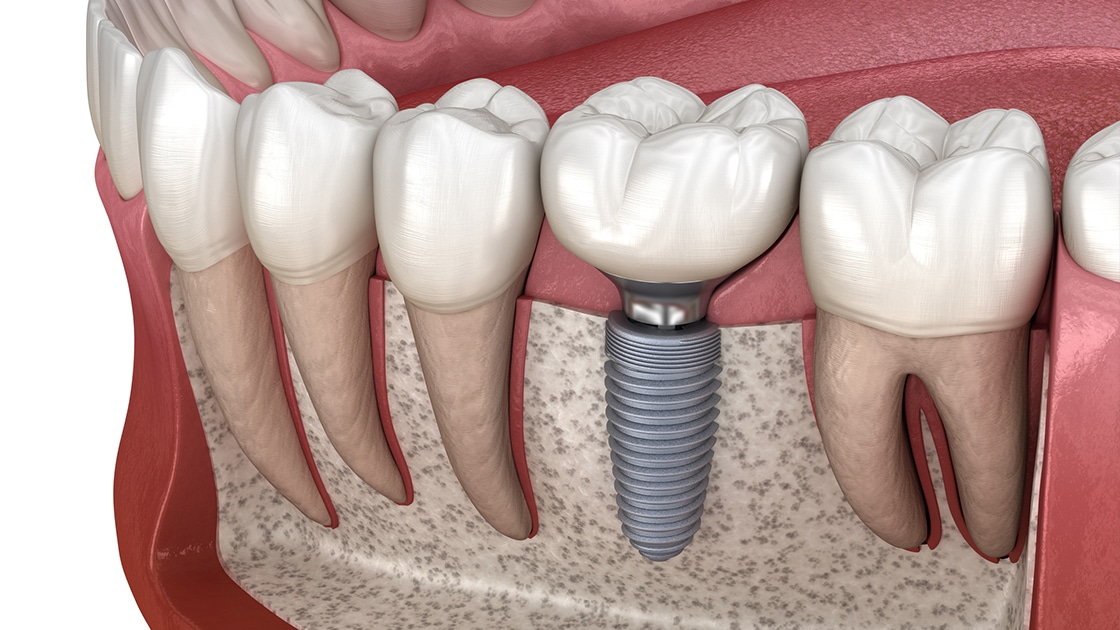Little Known Facts About Dental Sense.
Little Known Facts About Dental Sense.
Blog Article
Facts About Dental Sense Revealed
Table of ContentsThe Definitive Guide to Dental SenseDental Sense - TruthsNot known Details About Dental Sense The smart Trick of Dental Sense That Nobody is Discussing
are medical tools operatively implanted right into the jaw to restore a person's capacity to chew or their appearance. They provide support for fabricated (fake) teeth, such as crowns, bridges, or dentures. When a tooth is shed as a result of injury or illness, a person can experience difficulties such as rapid bone loss, defective speech, or modifications to chewing patterns that lead to discomfort.Oral implant systems include an oral implant body and oral implant joint and might likewise include a joint addiction screw. Professional teeth whitening. The oral implant body is surgically put in the jawbone in place of the tooth's root. The oral implant joint is generally affixed to the dental implant body by the abutment addiction screw and extends via gum tissues into the mouth to sustain the attached artificial teeth
(https://www.twitch.tv/dentalsense1/about)Structure of The Dental Implant System choosing oral implants, speak with your dental company regarding the possible benefits and threats, and whether you are a candidate for the procedure. Points to consider: Your overall wellness is an important variable in determining whether you are an excellent candidate for dental implants, exactly how long it will certainly require to heal, and just how long the implant might remain in location.
Cigarette smoking may impact the healing procedure and lower the long-term success of the dental implant. The healing process for the dental implant body may take numerous months or longer, during which time you typically have a short-lived abutment instead of the tooth. the dental implant treatment: Meticulously comply with the oral health instructions offered to you by your oral copyright.
The smart Trick of Dental Sense That Nobody is Talking About
Implant failing can lead to the requirement for an additional surgical treatment to take care of or change the implant system. Recovers the capacity to eat Restores cosmetic look Assists maintain the jawbone from shrinking as a result of bone loss Protects the wellness of the bordering bone and gum tissues Assists keep nearby (nearby) teeth secure Boosts lifestyle Damage to surrounding natural teeth during implant placement Injury to the surrounding tissues during surgical procedure, such as sinus opening Injury throughout surgery (for example, fracture of bordering jawbone) Insufficient function, such as seeming like the teeth do not bite with each other generally An experience that the tooth hangs or turning in area resulting from an abutment screw loosening Implant body failure (looseness of the dental implant body) because of systemic infection, which might be more probable in clients with unchecked diabetics issues as a result of local infection in bone and gums sustaining the dental implant body as a result of delayed healing, which might be more probable in clients that smoke Problem cleaning the gum tissues around the implant, leading to poor dental health Without treatment periodontal illness Post-surgical pins and needles due to nerve impingement or damages Constantly alert wellness care service providers and imaging professionals that you have oral implants prior to any kind of magnetic vibration imaging (MRI) or x-ray procedures.
FDA is not conscious of any type of negative events reported additional hints for MRI or x-ray procedures with oral implants. Oral implants systems are normally made from products that comply with global consensus criteria of the International Organization for Standardization (ISO) or ASTM International. These criteria have details of what makes a risk-free product.

A dental implant is a framework that changes a missing tooth. With screw-like tools, the surgeon inserts a dental implant into the jawbone, and it acts as an anchor for a synthetic tooth, called a crown.
Getting The Dental Sense To Work
Some individuals are not qualified for dental implant surgical treatment. It is for oral surgeons to operate people with: severe illnessuncontrollable metabolic diseasebone or soft cells illness or infectionIf these problems are fixed, an individual can have the surgical treatment. In, dental surgeons avoid operating people with: If individuals with any one of the above undergo dental implant surgical procedure, there is a greater risk of the dental implant falling short.

Oral dental implant surgical procedure is a customized process. It's not the same for every person. The adhering to gives a general summary of what you can anticipate your dentist, dental specialist, periodontist or prosthodontist to do: Put the dental implant operatively. Offer you time to recover. Connect the post and last crown, bridge or denture.
Next, your surgeon will thoroughly put the oral implant right into your jaw. If your dental implant is near the front of your mouth, your dental professional will certainly make a temporary tooth for you to put on until you heal.
The Definitive Guide for Dental Sense
Your service provider can tell you what to expect in your scenario. Throughout the recovery phase, your jawbone must fuse to the dental implant. This procedure, called osseointegration, is essential for security and long-lasting success. This procedure can take anywhere from 3 to 9 months. In many cases, it may take longer.
Once your dental implant heals, your dental practitioner can connect the joint (tiny port article) and your last restoration (crown, bridge or denture). This typically takes about one hour to finish and might call for a 2nd minor surgical treatment. You should not feel any type of discomfort during your oral implant procedure due to the fact that your service provider will make use of medicine to numb your gums.
Report this page